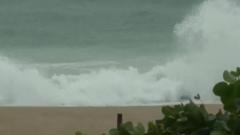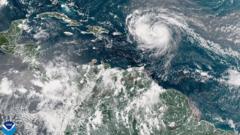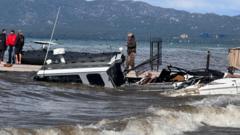MIAMI (AP) — A storm without a name and unusual king tides are causing some flooding on the Carolina coast early Friday as tropical storms churn in the Atlantic and along Mexico’s Pacific coast.
About a dozen streets are already flooded in Charleston, South Carolina, prompting the city to offer free parking in some garages. A high tide of 8.5 feet (2.6 meters) is forecast for Friday morning, expected to be the 13th highest in more than a century of recorded data in Charleston Harbor.
The unnamed coastal storm and the unusually high king tides, which occur when the moon is particularly close to Earth, threaten to bring days of heavy winds, potentially causing more coastal flooding, especially in the vulnerable Outer Banks of North Carolina and around Charleston.
In the Outer Banks, forecasters predict the worst weather will hit Friday through the weekend, with highways like N.C. 12 on Hatteras and Ocracoke islands likely to close again due to ocean overwash.
Meanwhile, in the Pacific, Tropical Storms Priscilla and Raymond are bringing heavy rain along the Mexican coast, with Priscilla potentially causing flash flooding across the U.S. Southwest throughout the weekend. Flood watches are in effect for parts of Arizona, California, and Nevada.
As Priscilla moves north at 6 mph (9 kph) with maximum sustained winds of about 50 mph (85 kph), it is centered about 190 miles (300 kilometers) west-northwest of Cabo San Lazaro, Mexico.
A tropical storm warning has been issued for Raymond, which is expected to remain off the southwestern coast of Mexico through Friday before approaching Baja California Sur this weekend.
In the Atlantic, Tropical Storm Jerry is passing east of the northern Leeward Islands, causing heavy rainfall. Officials in Guadeloupe have warned of potential power outages as Jerry, centered about 65 miles (100 kilometers) east-northeast of the Leeward Islands, moves northwest at 16 mph (26 kph) with maximum sustained winds of 60 mph (95 kph).
The Atlantic hurricane season is nearing its end with about seven weeks remaining, and experts are monitoring the potential impacts of the La Niña phenomenon, known for its role in weather alterations and intensifying hurricanes.





















